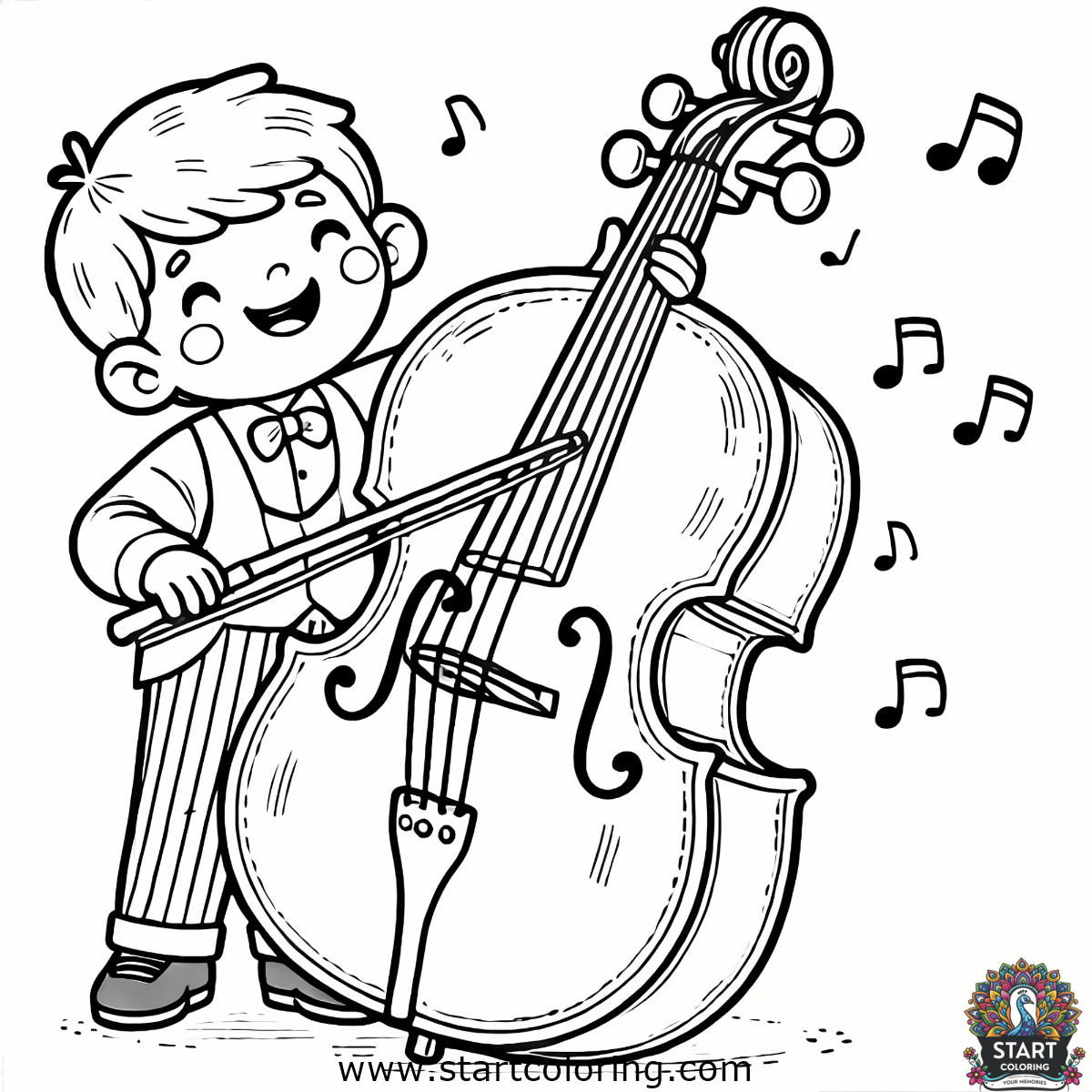Harmonious Little Cellist


Administrator
@admin
🎨 Color Palette: Orchestral Harmony
Capture the essence of a concert hall with this palette. The warm woods and deep shadows highlight the cello's rich texture, while softer greys are perfect for the bow. A muted dark grey-green (#2F4F4F) for the boy's suit provides a sophisticated touch, letting the golden yellow musical notes pop and symbolize the vibrant sounds filling the air.
Fun Facts & Tips
Use #A0522D (brown) for the cello body to mimic natural wood tones, layering with #8B4513 for deeper shadows to create depth! Did You Know? The cello's warm, rich sound is closest to the human voice's tenor range – making it incredibly expressive and emotive for coloring!
Cellos are typically made from spruce for the top (lighter wood) and maple for the back and sides (figured wood). Pro Tip: Use light yellows and creams (#FFFACD) for the spruce top and warmer, reddish browns (#B22222) for the maple to showcase these subtle differences through shading.
The bow of a cello is traditionally made of pernambuco wood and horsehair strings. Did you know? Resin, often called rosin, is applied to the bow hair for friction, crucial to creating sound! Experiment with light, wispy strokes in grey (#D3D3D3) to represent the bow hair and darker browns (#654321) for the wooden bow, thinking about texture while you color.
✨ Pro Coloring Tips
- Employ hatching and cross-hatching techniques to give the cello and boy's clothing texture. For the wooden parts of the cello, use short, parallel lines, following the wood grain direction, then layer with cross-hatching in darker shades to create depth. Practice on scrap paper first to achieve desired effects.
- Use blending stumps or cotton swabs with soft pencils or charcoal to create smooth gradients on the cello's body, especially around the curves and f-holes. Start with lighter shades and slowly build up darker tones, blending as you go to avoid harsh lines and create a realistic sheen.
- Experiment with watercolor pencils for a softer, more expressive feel. Outline the image with waterproof ink, then lightly color with watercolor pencils. Activate the pigments with a damp brush to achieve beautiful washes of color, especially effective for the background and musical notes surrounding the cellist. Let each layer dry before adding more details for best results.
- Consider using colored pencils with varying core hardness. Harder cores are excellent for fine details like the cello strings and boy’s facial features, while softer cores lay down color quickly for larger areas like the cello body and clothing. Layering different pencil types can enhance depth and visual interest. Prismacolor Premier and Faber-Castell Polychromos are excellent choices for both soft and hard core pencils.
Description
A collection of coloring pages inspired by cultural and traditional festivals around the world.
Concept
Single large cellist with a simple cello outline
👋 Meet Our Characters!
Meet Timmy Treble!
🎨 Creative DIY Ideas
- 1) Create Personalized Music Room Decor: Print and color multiple copies, then frame them individually or in a collage to decorate a music room, studio, or child's bedroom.
- 2) Design Unique Greeting Cards: Color and cut out sections of the image to create charming handmade greeting cards for music teachers, fellow musicians, or any music lover.
- 3) Make Custom Bookmarks: Reduce the image size and print on cardstock to create durable and artistic bookmarks – perfect for music books or journals.
- 4) Craft Musical Gift Tags: Print smaller versions and attach them to gifts for music-themed parties or events for a personalized touch.
- 5) Create Classroom Visual Aids: Use the colored pages as vibrant visual aids for music lessons, introducing children to different instruments in a fun and engaging way.
- 6) Decorate Tote Bags or T-Shirts: Transfer the colored design onto fabric transfer paper and iron onto a plain tote bag or t-shirt for a unique, handmade musical accessory.
- 7) Make Window Clings: Color the image on transparency film to create reusable window clings, adding a musical theme to windows or glass doors.
- 8) Develop Storytelling Prompts: Use the colored image as a starting point for creative writing or storytelling activities, inspiring children to create narratives around the little cellist and his music.
🎨 Harmonious Hues Challenge
Color the Little Cellist page using only shades of 3 colors to create a monochromatic or analogous color scheme. Share your unique, harmonized artwork!